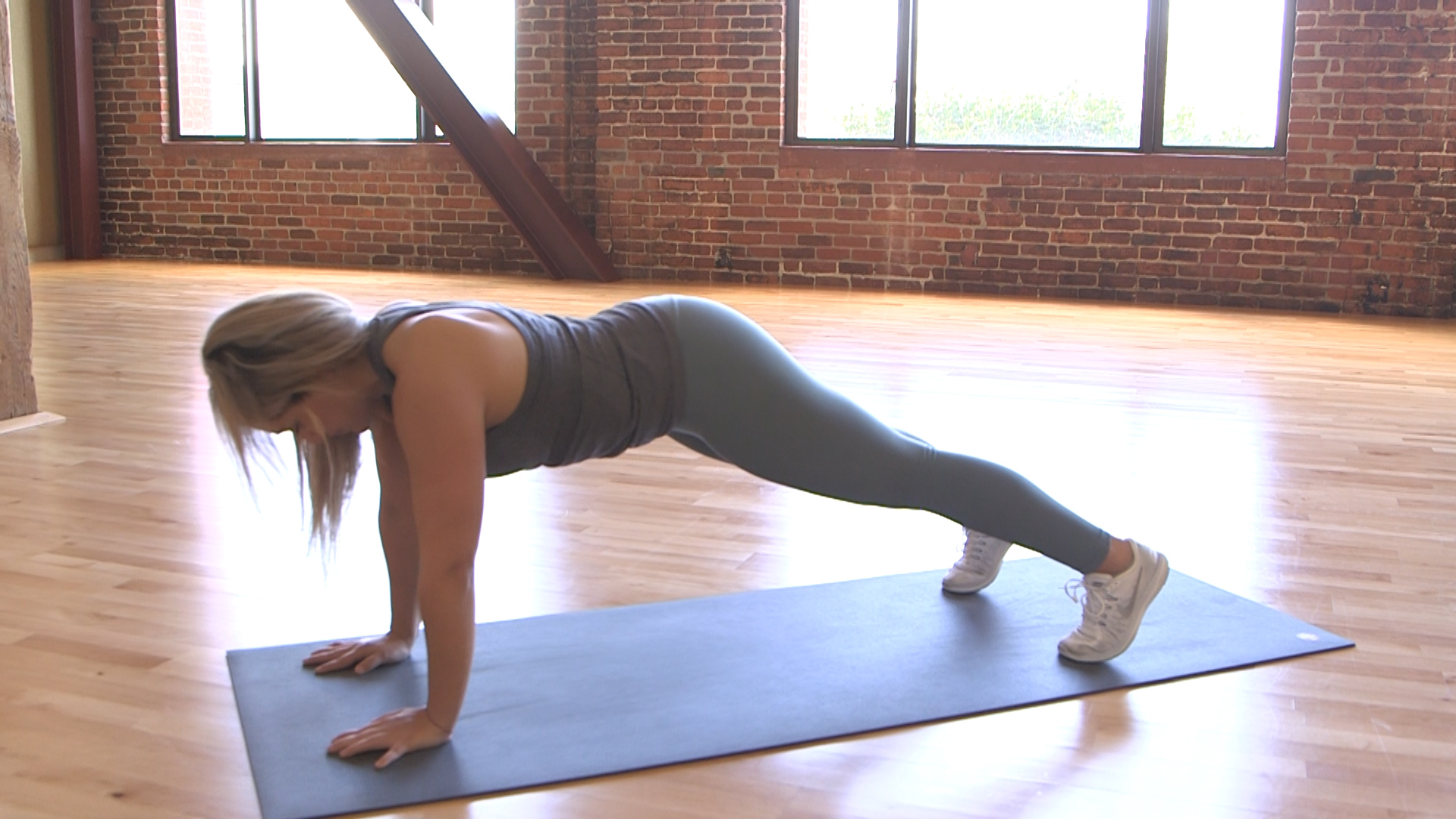From barre to power cycling to lifting weights, before working out, most people do some sort of stretching to warm up the body. However, when it comes to post-fitness routines, stretching is often overlooked—and it shouldn’t be. Rushing out of a class or the gym without giving your body enough time to slow down could result in an injury. For the best recovery, it’s crucial to stretch after a workout.
Stretching decreases the risk of muscle fatigue and soreness. It eliminates lactic acid, helps the cooling down process, ensures that you’ll feel energized after the workout, and increases blood flow. Post-workout stretching also alleviates back pain, tension, and anxiety. Other benefits? It improves posture and flexibility and makes your muscles look toned. To find out the most effective movements, we spoke with Kristina Alai, a star trainer and Club Manager at Bay Club Financial District. Here are six valuable stretches that should be added to your daily fitness regime.
1. Bridge with overhead reach
Start by lying on the floor with your knees bent and your feet flat on the floor. Gently lift your hips off the ground and press them up toward the ceiling into a bridge pose. Raise your arms over your head and take a feel deep breaths. This stretch, which is great for strengthening, targets the glutes and core while improving flexibility of the spine. This exercise will also target the hip flexors, back muscles, and increase thoracic mobility.
2. Single leg glute bridge
Start in the same position as you did in the above stretch lying on the floor with knees bent and the feet flat on the floor. Roll up into a bridge, and lift one leg off the ground. Hold the leg up for a couple of deep breaths. Gently place it back down and lift the other leg. In addition to each glute being activated to perform this move, the hamstrings, back and core are stretched. This movement helps strengthen the core and other auxiliary muscles.
3. Thread the needles
Start in a comfortable child’s pose. Place your right arm over your head. Thread your left arm through the right placing it on the floor, so it is perpendicular to the other arm. Your head should rest on the floor. This stretch opens the shoulders, chest, arms, upper back, and neck. It releases the tension that is commonly held in the upper back and between the shoulder blades. This pose also provides a mild twist to the spine, which further reduces spinal tightness.
4. Adductor rockers
Knee on the ground. Place the right foot flat on the floor diagonally out to the right side, so that the leg forms a 90° angle to the floor. Lean into your leg in a slight rocking motion. The adductor muscles along the inner thighs can become tight—especially for those who sit at an office desk for long periods of time. You should feel a soothing stretch in inner thighs and hip flexors. This movement increases mobility in the joints, which is essential to prevent injuries.
5. Inch worms
Start standing. Gently roll your body down into a forward fold. Walk your hands out until you are in a full plank. Pike the hips up toward the air and walk your hands back to your feet until you are in a forward fold. Slowly roll up. Repeat. In this movement, the core and shoulders are primarily used. The arms, chest, and back are secondary muscles that benefit from the stretch as well. This is a wonderful exercise to warm up the entire body. It gets the blood flowing and strengthens the arms, chest, back, lower back, and abs while increasing balance and stability in the body. Inch worms are also important to maintain stability and proper posture.
6. Lunge with an overhead reach
Start standing with feet hips distance apart. Move the right leg forward so you are in a deep lunge. Stretch the arms over head and lean to the right. Take a feel deep breaths as you deepen the stretch. Bright the right leg back to the standing position. Repeat with the other side extending the left leg forward into a deep lunge and leaning to the left with the arms over the head. This stretch lengthens the adductor, increases hip-hinge mobility, and causes frontal plane stability. By adding in the overhead reach, you get a greater emphasis on optimal core stabilization. It also targets the shoulder girdle area.
What other stretches should you do after class? Don’t hesitate to ask! Our knowledgeable staff is ready and willing to help you get the most out of your recovery time.






1 Comment
Appreciate the exercises/stretches. Just noted that the written instructions don’t exactly match the video. For example, the lunge could have both arms overhead or just one; or bend toward the forward leg or away from it.